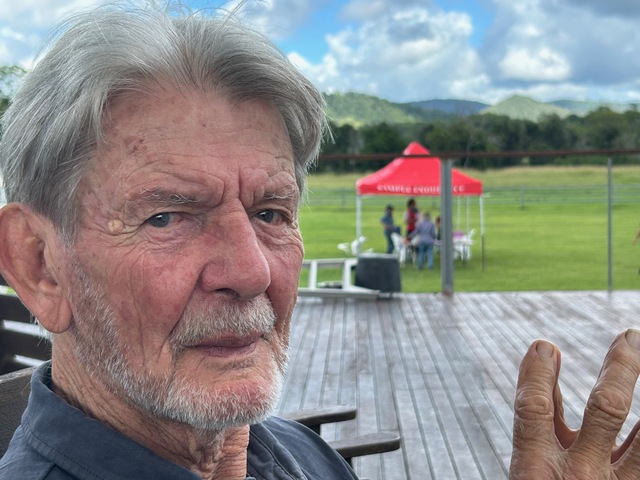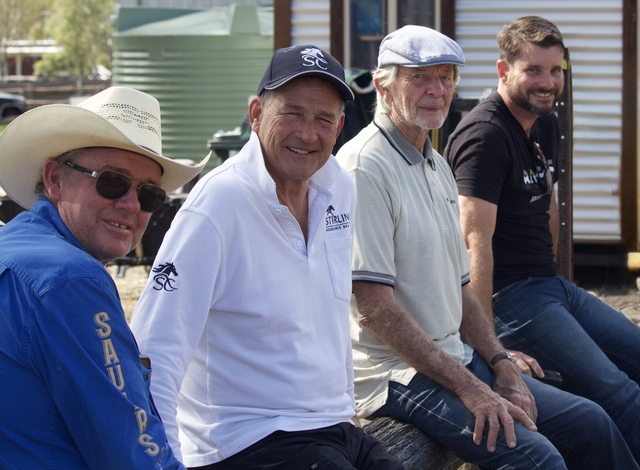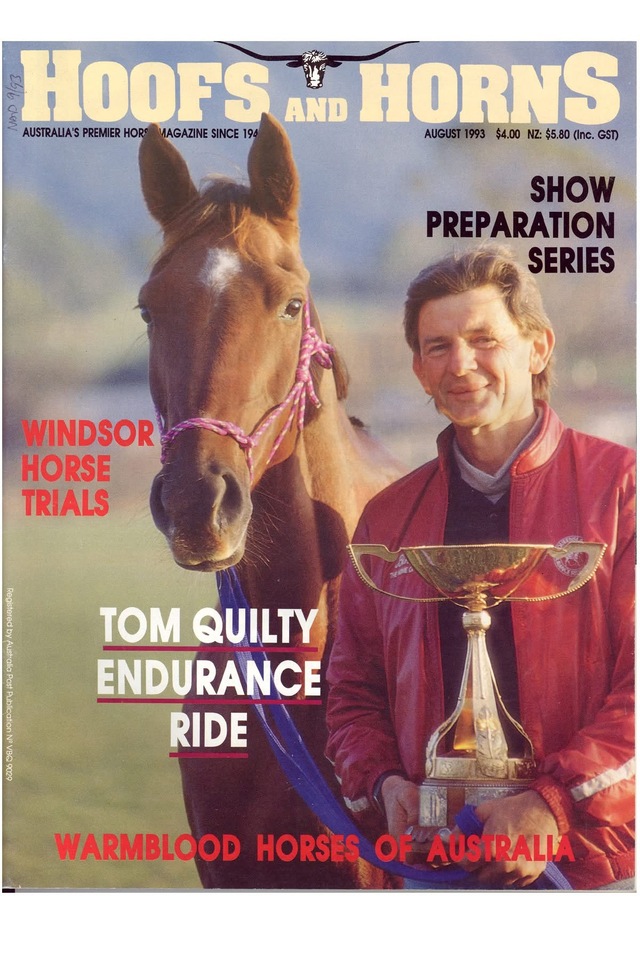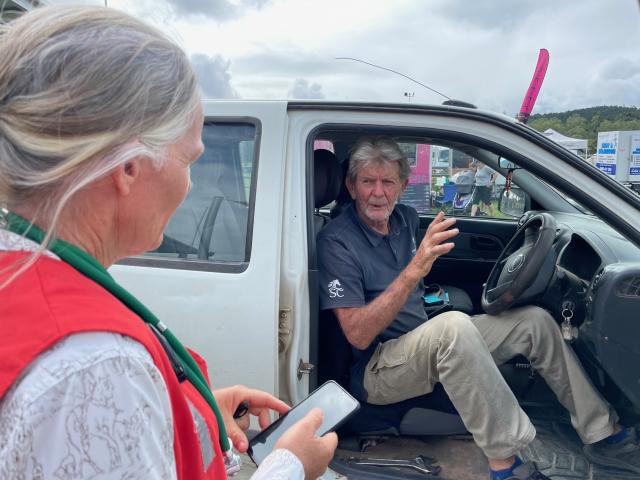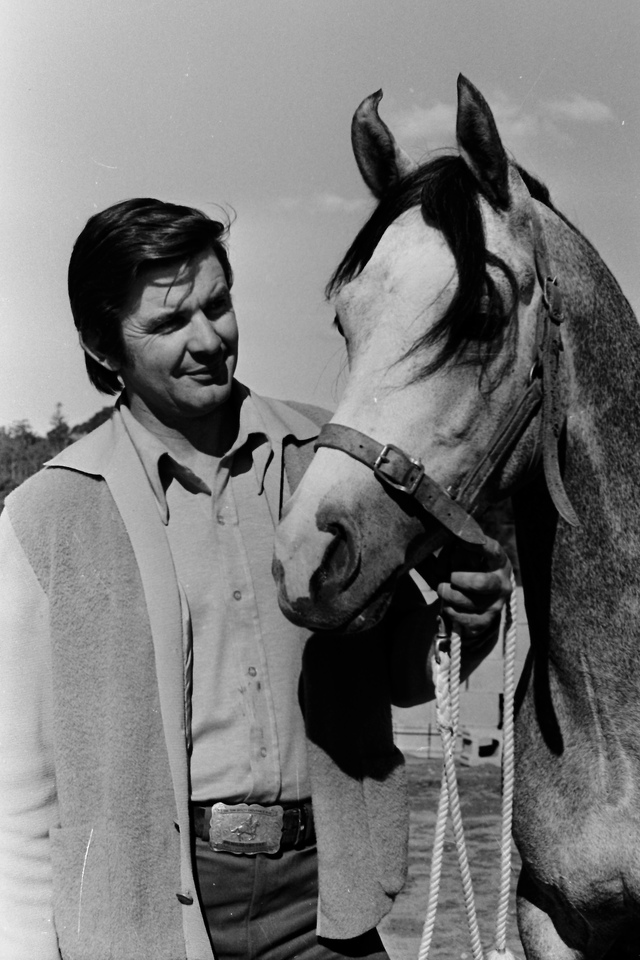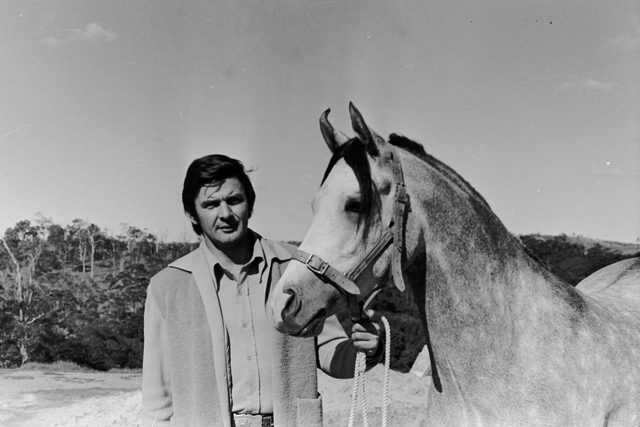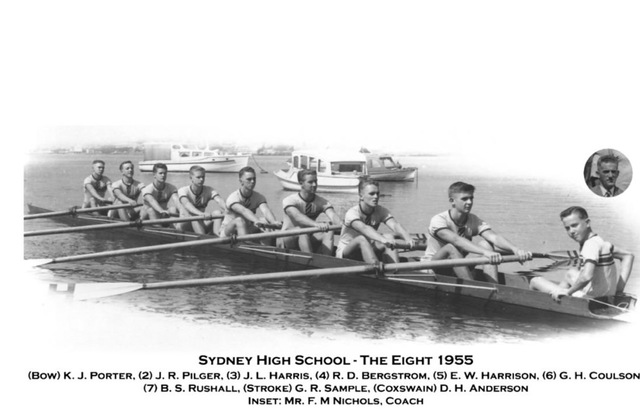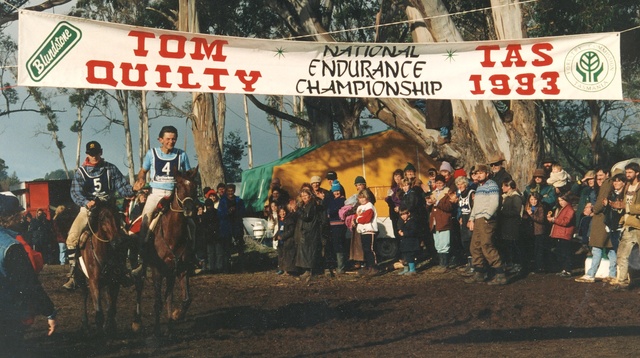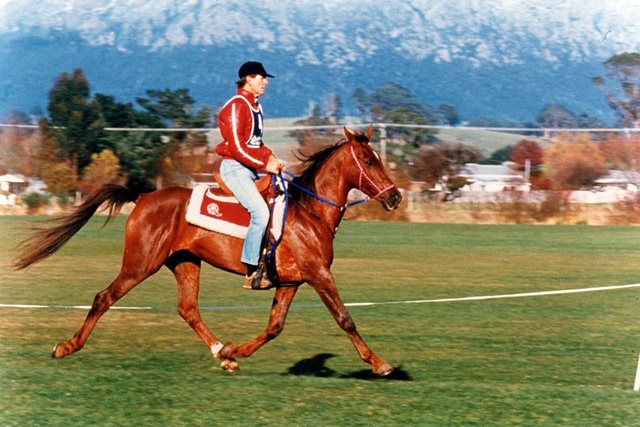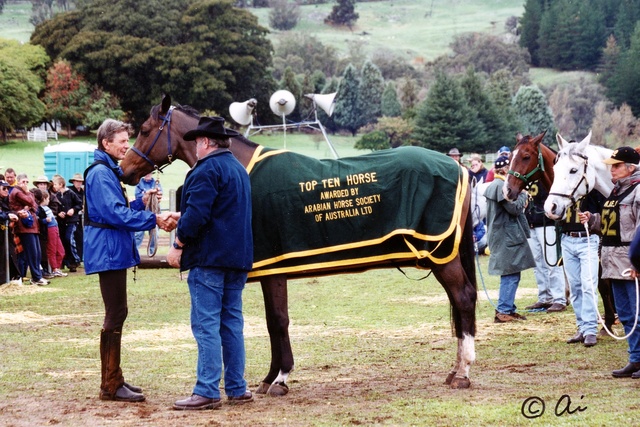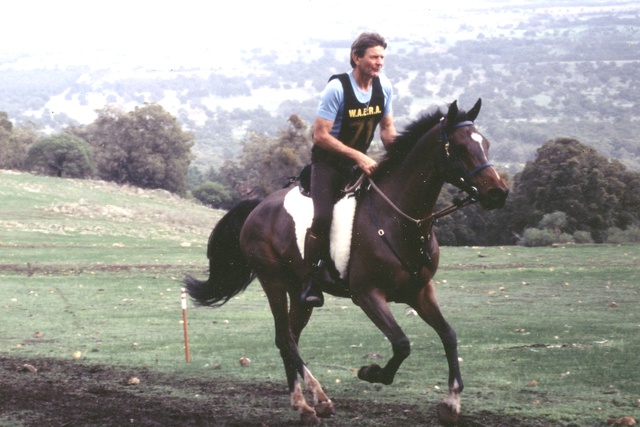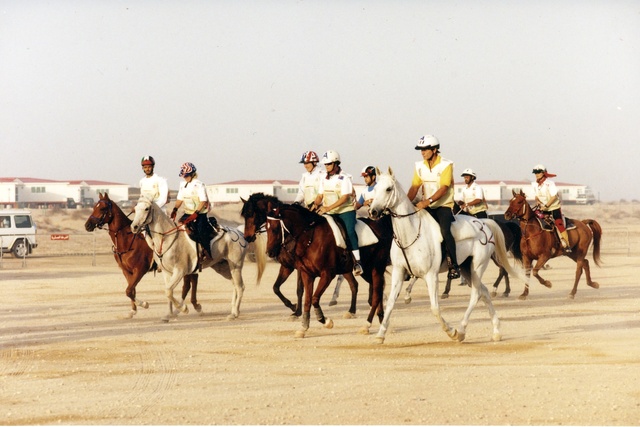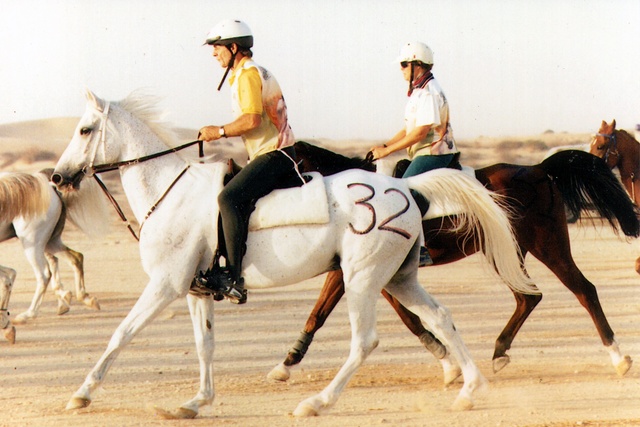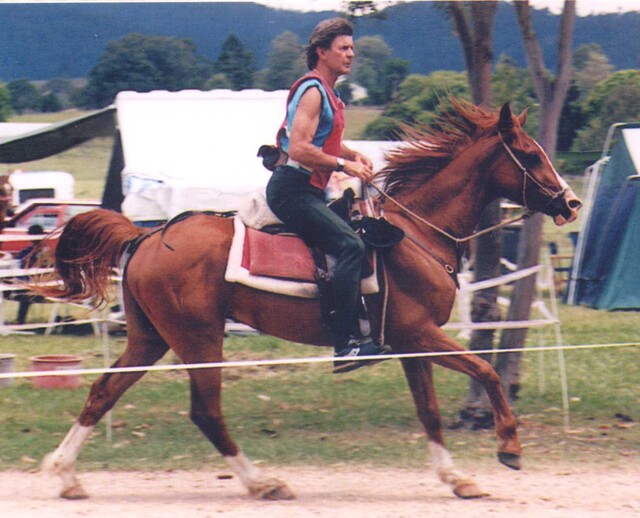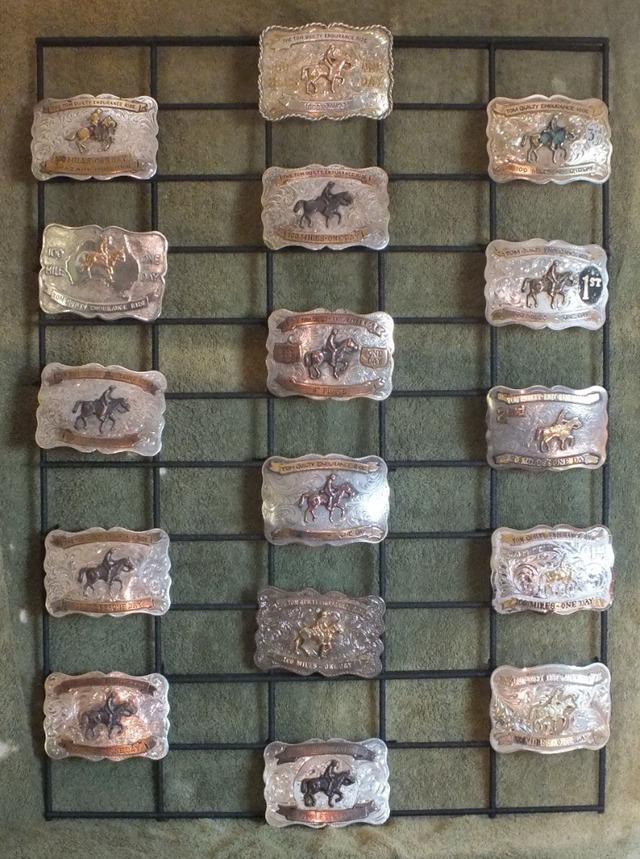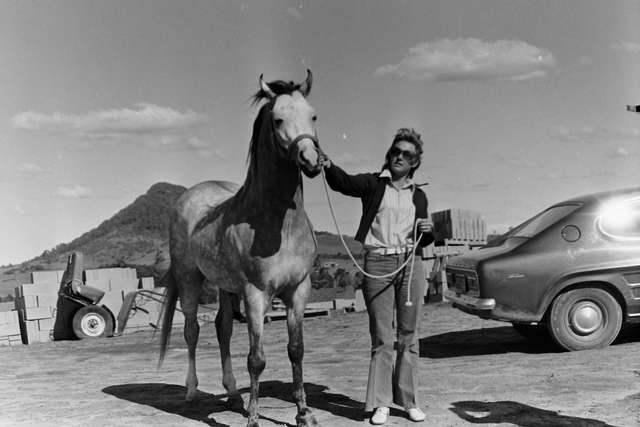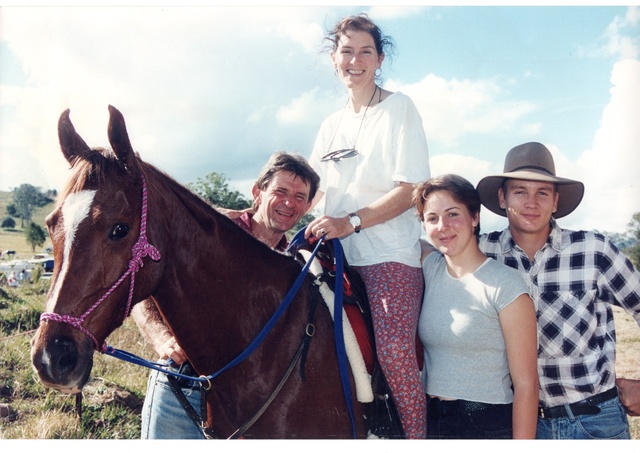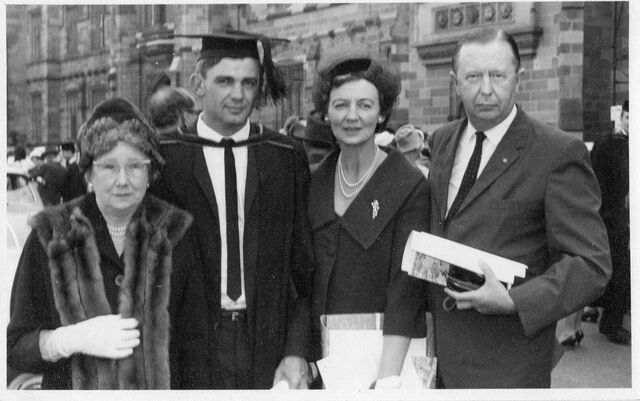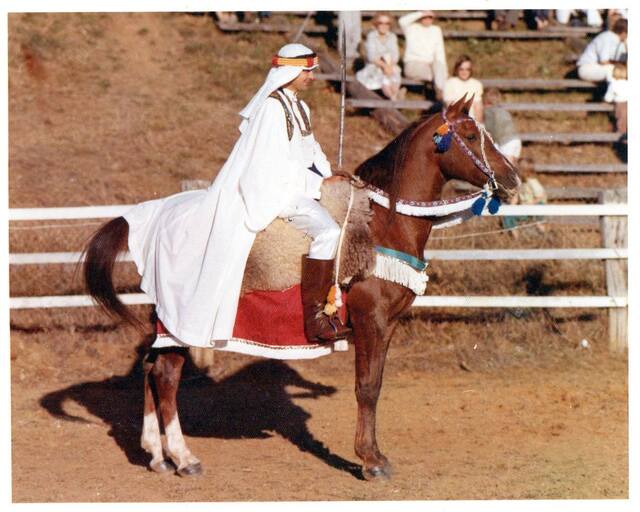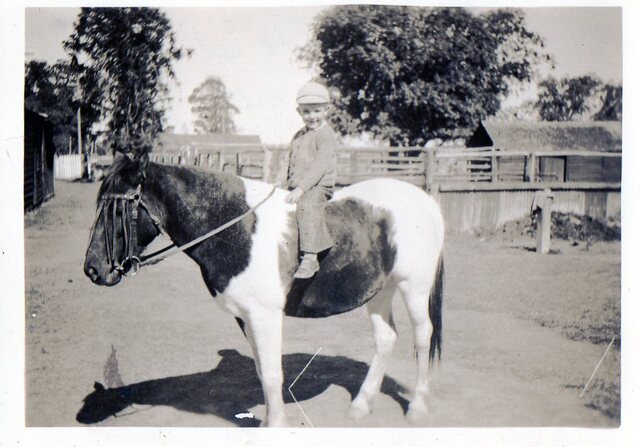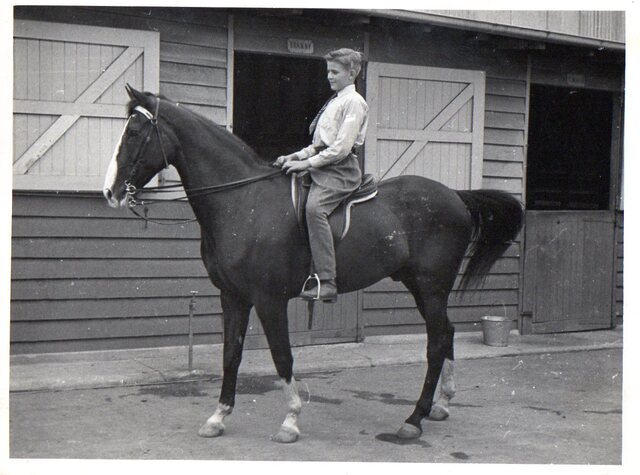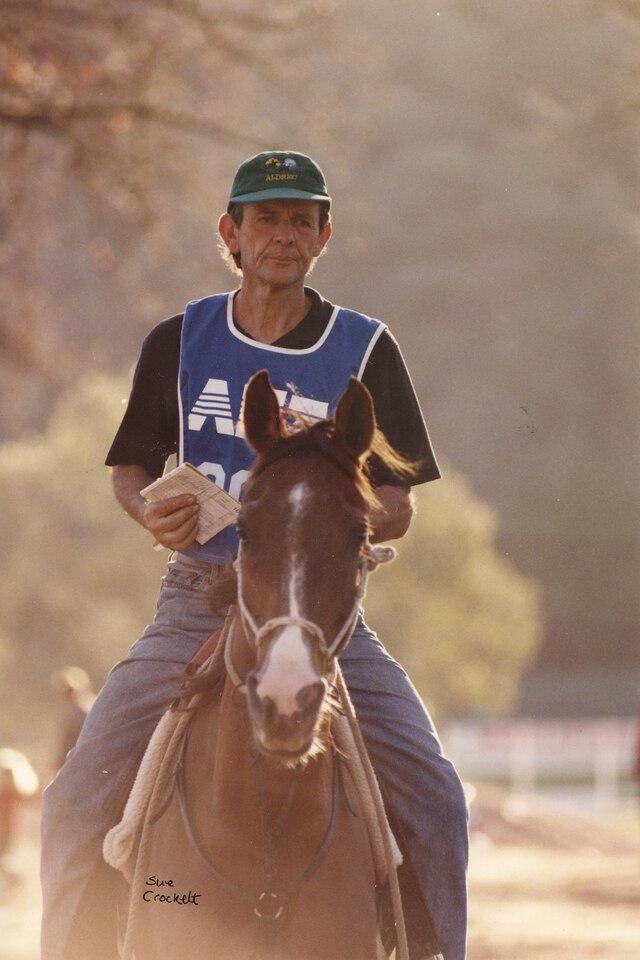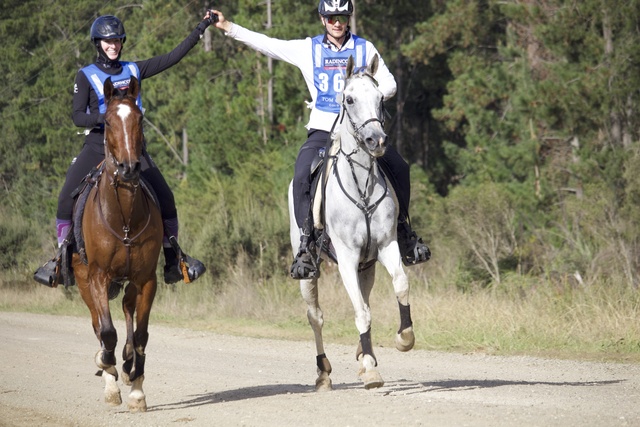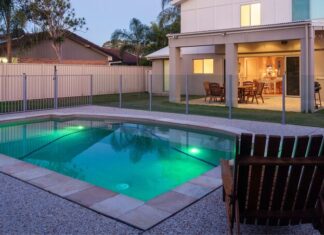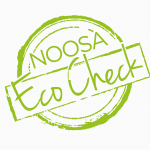The word legend can often be easily bandied about, but in Bob Sample’s case it reflects what he has done in life – particularly in endurance horse-riding circles.
Yet there is so much more to Bob and his legacy.
It reminds you that through the years you can regularly deal with people, but it is only when you set aside time to really talk with them, and listen, that you discover the full depth of their life.
Even now, in his 80s, Bob has been surprised at how little he knows about the early lives of mates … friendships built up over years in various sporting arenas and careers.
From jackaroo to board chairman, from working with dairy cattle to horses, he has led a full life.
Sitting on the deck at Stirling’s Crossing Endurance Centre at Imbil, Bob and I were watching the riders come in from an event.
There was that far-away look in his eyes as he recalled past rides.
Among those on this ride were friends and family but also a crop of new riders that Bob likes to encourage.
Some are now travelling the world … confident young riders who have been around horses for so long that they have a high degree of competency.
Being born when a worldwide depression was finishing, and World War Two was soon to be declared, had a major influence on Bob’s life.
“I remember Sydney being ‘blacked out’ and seeing the big crater in a Rose Bay road where a shell from a Japanese submarine had landed.
“Looking back, I am aware how my father was impacted by this challenging environment.”
Perhaps that accounted in some ways for the difficult relationship he had with his father, George Sample.
It wasn’t until Bob was nine years old that he found he had been christened George Robert Sample.
“It was a dramatic shock for me as I had been ‘Bobbie’ within my family, and Bob Sample at school.
“The last thing I wished for was his name.”
Later he discovered that his grandfather was George Henry Sample, and that his father was George William Sample.
It’s a tradition that Bob believes has run its course.
Like so many, teenage years could have been an emotional disaster, but at 13 years of age Bob discovered he was good at various sports. That became his ‘escape’ and he excelled as a rower, an athlete, a rugby footballer, and a swimmer.
That saw several top awards for sport and sportsmanship at Sydney Boys High School, representing Sydney University in rowing and athletics, and winning New South Wales championships in both of these sports.
He did enough study to graduate from Sydney University in 1962 with an Economics Degree and Accounting qualification.
“The day I finished my final exams I packed my bag and ‘went bush’ to follow my true interest in working with animals and the land; being a farmer.
“Little did I realise that my university degree would be of value to me later in my life.”
A passion for horses began very early and as a young boy Bob’s bedroom walls were covered in photos of beautiful Arabians.
“I hung over the fence at the Sydney Royal Show watching them being judged, and would talk with them in their stalls.
“Early school holidays were happy experiences as we camped in the bush and I had many pony rides.
“While still at university I purchased an Arabian colt foal. When I left Sydney the colt and a part Arabian mare followed me to my first job as a jackaroo.
“My life has really been opportunities coming along and deciding whether to take them or not.
“Quite quickly I looked to become a farmer with my own land and convinced the family’s bank to let me take over the debts of a run-down dairy farm. That was at Bell and the back of the property was the Bunya Mountains.
“I had never milked a cow before, so the family who owned the farm stayed on to show me how to do things.
“The first month’s income from the butter factory for the cream was equivalent to $56.”
After quickly switching to milking stud jersey cows, Bob built a modern herringbone milking shed and was soon milking 150 cows each morning and evening.
Income from the bulk milk had reached more than $3000 per month.
Having married Noelien at the Gold Coast, their family soon grew to include Brett, Amanda, Matt and later Brook.
“I was a true farmer, ploughing my paddocks and looking after my animals. Our cows became the highest-producing herd of more than 100 cows in Queensland.
“Much to the surprise of old timers, we won prizes for the jerseys at the Brisbane Exhibition and my Arab colt achieved Champion Arab Stallion. That led to becoming a qualified judge of Arab horses.”
In the mid-1960s, while growing their dairy operation, he helped establish a farm management consulting business to assist farmers learn good budgeting and improve their submissions to banks or other financial institutions.
That also saw him become skilled at pregnancy testing cows – up to 200 in a day – and he was flown around much of Queensland.
Showing the benefits of early school and university connections, Bob was approached by then successful business and professional people. It was a time when there were very big taxation advantages in being involved in primary production.
That started a period of purchasing low-cost and sometimes neglected farms in the Sunshine Coast hinterland. They formed a company that built new fences, created good water storage dams and established large-scale improved pastures on properties for clients.
“At one stage I was managing around 40 properties for absentee owners from Sydney and Melbourne. With the help of stockmen we worked more than 3000 cattle on about 5000 acres.”
By 1973 this business had run its course as the owners were able to sell their land at substantial profit. The Noosa Heads boom had started.
At the same time, a new phase of Bob’s life began. He was asked to represent local dairy farmers on the Queensland Dairyman’s Organisation State Council.
From there, he was appointed to the Australian Dairy Farmer’s Federation and was soon elected as president.
The government appointed Bob as Australian Dairy Corporation deputy chairman and a member of The National Rural Advisory Council.
He was also Australian Dairy Industry Council chair which brought together dairy farmers, manufacturers, exporters and major retailers.
“It seemed that my university degree had opened doors for me.
“Being in my mid-thirties at the time, I looked around to see everyone else in these organisations was over 50, many over 60.
“I was aghast at the thought of me being in these positions, so I committed to myself to ‘doing this for three years only.’
“It was an amazing experience for me. I travelled overseas to inspect production factories using Australian product where I was on the board of directors. That involved making submissions to the Prices Justification Tribunal and to the Industries Assistance Commission.
“Many days were spent in Canberra negotiating with politicians and high-level public servants. As a result we met and interacted with inspiring and very well-respected people.”
Reflecting on his childhood Bob used to go up to Mount Victoria in the Blue Mountains for school holidays and a place where you could have pony rides.
“Later, when about 11 or 12, I talked my parents into going to a riding school.
“It was indoors at Randwick and with a Russian instructor. He was a classic rider. I’m sure that influenced me. The ability to sit properly on a horse.
“In my mid 30s, I discovered that my mother had been a very good horse woman but in that era, when a woman married, they became a wife and that was it.”
In 1970 a friend introduced Bob to endurance horse riding and much to his delight the horses he was breeding were suited to the discipline.
“Very quickly endurance became a major involvement for me. Luckily, I had found a good family to help with my dairy farm and the milking. This made it possible to travel away for my other activities.”
These included his first trips to the Tom Quilty ride – regarded as Australia’s premier endurance event.
The ride, approaching its 60th year, is held on a rotational basis between Australia’s states. This sees riders and horses completing 160km in a 24-hour period.
The winning rider is awarded the Tom Quilty Gold Cup. However, the main attraction is that every rider who completes the course is awarded a Tom Quilty belt buckle.
“From 1971 on, I shared my love of horses and endurance with partners Elizabeth, Francoise and Vanessa, as well as with children Brett, Amanda, Matt, Brook and Lara.
“My Sharahd Stud became the top breeder of endurance horses in Australia.
“Some of the many joys of my endurance career included riding beside my children, including Brook in his first endurance ride when he was only four years and nine months old. Then seeing Lara ride the 1994 Quilty with such determination to finish equal first junior.
“Watching Matt and Brook finish equal first in the 2009 Quilty in Victoria, Leigh-Ann and Vanessa’s Quilty successes and Brook’s multiple Quilty wins are precious memories.
“Matt has established a top-quality specialised endurance ride base facility at Imbil ensuring the family contribution to the sport for many years.
“It is very satisfying for me to see my young family members so committed to endurance.”
The 2026 Tom Quilty will be the 60th anniversary of the ride and is to be held at Stirling’s Crossing Endurance Centre. Meanwhile, this year’s Queensland State Championships are scheduled there on July 11-13.
In 1976, after three years of being heavily involved in the dairy industry organisations, Bob resigned all positions, as he had decided to do at the start.
He chose to simplify his life and took the opportunity to buy part of a large property he had been managing at Conondale, in the Mary Valley.
With then partner Francoise and 50 horses, he moved onto the land now known as Crystal Waters Permaculture Village.
Without taking action to cause it, by late 1978 about 20 people had moved onto the land with them and the Crystal Waters Community had been established.
The home birth of daughter Lara to Francoise and Bob saw him happy to assist in more births.
Birthing became very special for him – and it didn’t matter if it was a mare, a cow or for a special human friend.
In 1986 the Conondale land was transferred to facilitate a group title subdivision and the Crystal Waters Permaculture Village became a reality. Now it is the home for more than 250 people.
For a year Bob was manager of the Maleny Enterprise Centre – a business start-up incubator. A visit to Crystal Waters by internationally-known horse person Linda Tellington-Jones at the time resulted in the business Horse Trek Australia being established, and that brought many happy memories.
During most of his time with endurance, Bob has chosen to contribute to the sport in many ways, which has resulted in life memberships for the Australian Endurance Riders Association (AERA), Queensland Endurance Riders Association (QERA), and being a foundation member and later president of the Far-A-Way Riders Association, based at Imbil.
Far-A-Way started in the Mary Valley in 1986 to create a signature ride for Queensland. It was highlighted in the 320km marathon, ridden over four days, and seen as a good test of rider and horse.
There is so much of Bob’s life he is grateful for, even the many challenges he has had to deal with.
“It is a pleasure for me to see my brother John enjoying happy times with his expanded family. My only regrets relate to causing hurt to others.
“It was never intentional but none the less I was responsible for my actions. I made peace with my father before his death, and came to understand what caused me to behave the way I did as a father.”
In recent years Bob has become increasingly focused on human and equine psychology.
On finishing his university degree he vowed to never study again, yet in 2015 completed a Diploma of Counselling.
His focus is now on mental health, particularly suicide prevention and men’s anger issues that so often result in domestic violence.
“Now in my 85th year I am optimistic about our future. It will be determined by younger and wiser generations who will make decisions for our societies.
“The events of late 2019 and 2020 cannot be ignored. Climate change, extreme bush fires and then COVID-19 have impacted on Australia, a country that is special to me.”
Change has been a feature in his life.
“Fortunately, I have welcomed it. A skydive from 15,000 ft was an exciting event on my 81st birthday.”
Lessons learned in such a rich life include the way people treat horses.
“The psychology fascinates me. People and horses have been my two passions.
“In many ways they are similar but in others they are opposite. Humans are predators and horses are prey animals.
“A horse needs to trust each individual human. Once you’ve established that trust then you can get cooperation.
“You need to have leaders both in humans and in horses.
“For the leadership of a horse you need to have a strong and fair mind about what you need it to do.
“Humans tend to develop beliefs and then create arguments – not all valid but to justify their decision. Our self-image is damaged by admitting we’re wrong.
“My belief might differ from theirs. I don’t need to try and convince them that I’m right and they are wrong.
“I’ve done quite a lot of suicide counselling and if you get to the person – and you’ve got the skills – most times you can show them there is a reason to live.”
For Bob, the most powerful words he has heard have been: “If it wasn’t for you, I wouldn’t be alive now.”
A great lesson Bob has learned is resilience – something that has been passed down in his family. Yet living in rural Australia teaches you that as well.
After more than 40 years of riding and 15,000 successful kilometres covered, a health condition forced Bob into riding retirement. However, he continues to contribute to endurance as an active member of both the Far-A-Way and Stirling’s clubs, quite often involved in track monitoring, advising and driving the retrieval float.
Perhaps more than anything Bob has always valued the long-term, Australia-wide friendships that endurance has given him.
He has many happy memories of groups sitting around the campfire listening to the fascinating stories from R.M. Williams.
Bob has also been a mentor to many and he has enjoyed introducing so many people to endurance and to guiding them to success.
In 1977 he was invited to Japan to help establish the sport there. He made good friendships, gave workshops, organised rides and competed in a 160km ride.
As a result he had two young Japanese riders spend several months riding and training with him in Queensland. Later, both won Quilty Lightweight Rider Divisions.
KEEPING THE LEGACY ALIVE
The Sample endurance horse-riding success story started in 1993 when Bob Sample won on Sharahd Caprice in Tasmania.
His sons Matthew and Brook have continued that legacy, with Brook winning three gold cups before finishing equal first with Matthew in 2009.
Brook won the junior division in South Australia in 1986 and came in equal with Bob in 1993 as an open rider, but his horse did not pass the final vet check.
Brook has gone on to win a record seven Tom Quilty Gold Cups and 15 buckles – the same number of buckles as Bob.
Matthew won the coveted trophy at Nanango in 2008, gained third placings at South Australia in 2011 and Tasmania in 2012, then won the heavyweight division in South Australia in 2024.
Saasha Grogan, who is Amanda‘s daughter and Bob’s grand daughter, won the Triple Crown in 2024 with S’Shaada Material Girl. This is a wonderful achievement, with horse and rider needing to complete a QERA marathon, QERA State Championships, and Tom Quilty all in the same year.
This year, in Tasmania, Matthew’s wife Nikki and Brook’s son Matty crossed the line together as equal winners of the event.
At the same time Taylor Grogan, daughter of Saasha and Mark Grogan, came third in the junior division. She will be 12 this year.
History certainly does have a way of repeating itself – and Bob Sample would be very proud that the Sample name will be a legacy in endurance riding circles for years to come.

